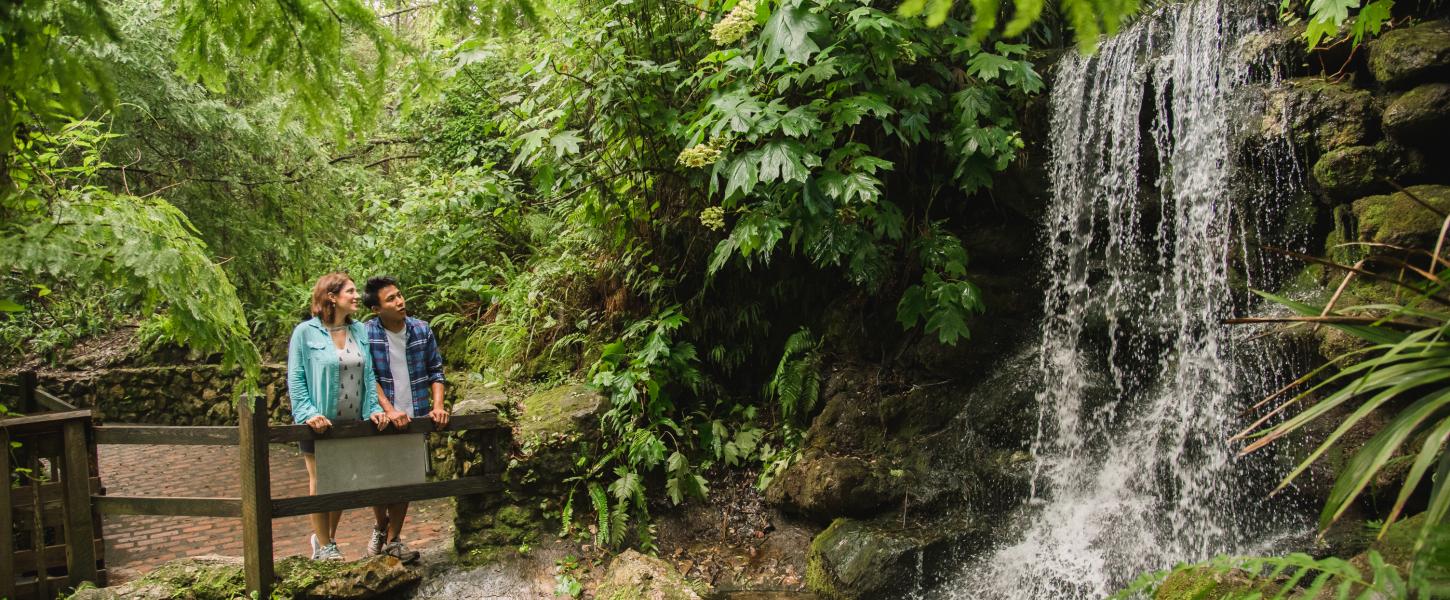History of Rainbow Springs

In 1889, rock phosphate was discovered around the springs. Phosphate is an important mineral used to fertilize crops and in animal feed, food preservatives, cosmetics, and other industries. At the time, the phosphate discovered by the springs and the nearby town of Dunnellon was among the purest in the world. Many people living in the area depended on phosphate mining jobs, especially after freezing temperatures in the 1890s devastated the citrus industry. The 1889 discovery ushered in a mining boom that brought many new people seeking jobs into the area.
These phosphate miners used huge steam-powered machines to dig pits to locate and remove the phosphate. There are several pits within the park boundary and more in the area. The huge piles of discarded soil were the perfect place to build waterfalls!
But why would someone build waterfalls here? After the mines around the springs were exhausted, the area was purchased and turned into a tourist attraction. In the early and mid-20th century, business owners capitalized on Florida’s tropical image to attract even more people to this “jungle oasis.” Tropical-looking waterfalls complemented the park’s springs and its collection of exotic animals, enticing visitors who had a particular vision of Florida in their minds.
There are many relics of Rainbow Springs State Park’s past as a tourist attraction. The waterfalls, the rainbow fountain, the entrance walk, gift shop, dining terrace, and the remains of the aviary and animal cages all date from the 1960s, Florida’s golden age of tourism.
The attraction operated until the mid-1970s. Bypassed when Interstate 75 was built through Ocala and affected by the competition from Walt Disney World near Orlando, the Rainbow Springs tourist attraction experienced a steady decline in business and was forced to close in 1973. In 1990, the property was acquired by the state of Florida to be managed as a state park. Today, the Florida Park Service protects the park’s natural and cultural resources. That includes the jungle waterfalls, which are still fully functional.

